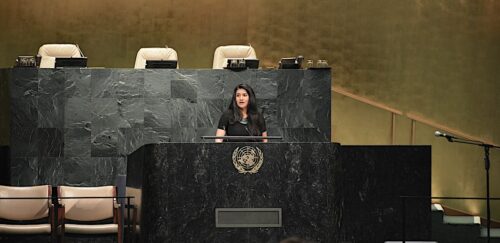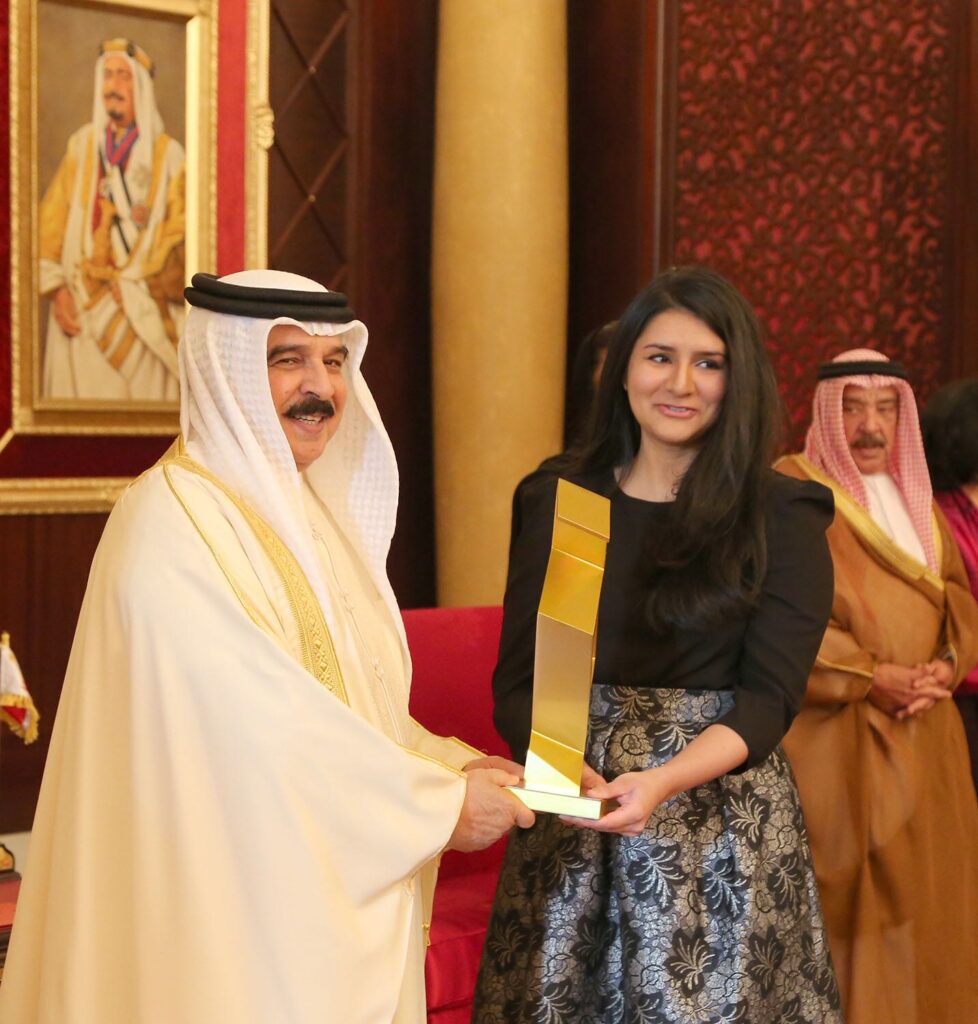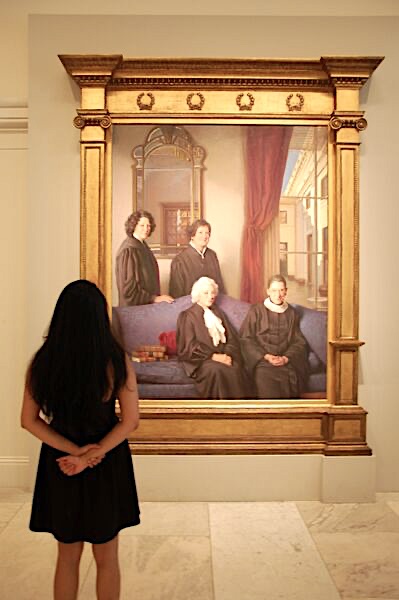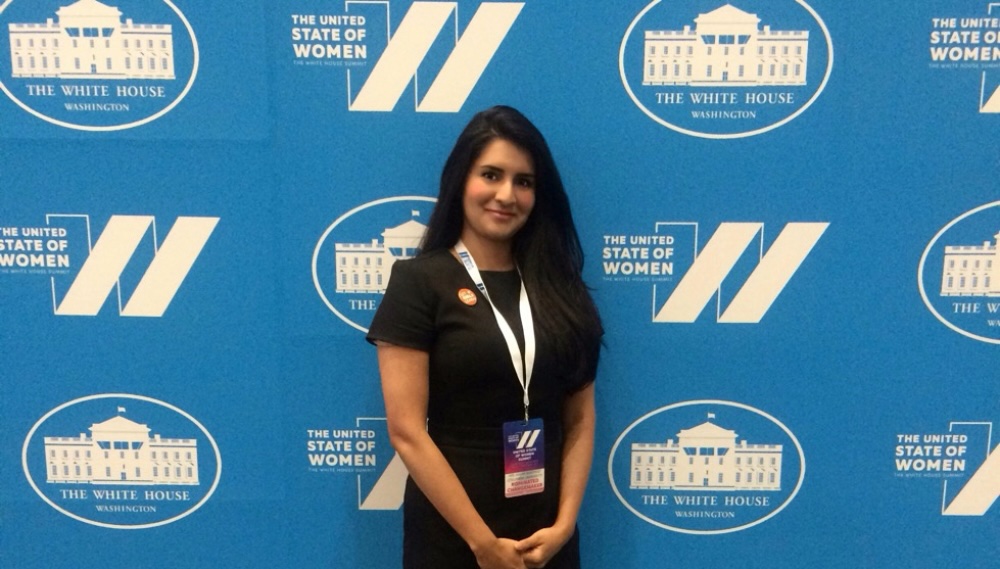
Hadia Sheerazi: Championing Sustainable Outcomes for the Energy Transition
This RMI manager, named one of the “50 Rising Stars in ESG” in the Financial Times, is helping the highest-emitting industrial sectors cut emissions and catalyze local socio-economic growth.
On International Women’s Day — a day to celebrate the social, economic, cultural, and political achievements of women — we would like to highlight one of the amazing women we have working at RMI. Meet Hadia Sheerazi, a manager on RMI’s Climate-Aligned Industries team, helping to reduce pollution from some of the highest-emitting industrial sectors. I sat down with Hadia to find out what drives her.
What got you interested in working in the climate change space?
I was born and raised in Pakistan, the eighth most climate vulnerable country, with the second worst air quality in the world. Rolling blackouts, acute energy insecurity, chronic air and water pollution, political instability, heatwaves, floods and droughts, and a population plunged into deep multidimensional poverty, were the backdrop of my entire childhood and teenage years in Karachi, which sits just behind New York as the 12th largest city in the world.
Yet in all the chaos, what I remember most is having deep awe and reverence for the breathless, diverse topography and natural beauty of Pakistan. Both my parents are teachers and lifelong educators, and from the very beginning they actively encouraged my curiosity of the world and unconditionally supported my quest to find my place and purpose in it.
While it wasn’t a linear journey, I can point to four moments that got me on this path.
One was when I first learned that even in the United States, one of the most developed and wealthy countries in the world, one in three households experiences energy poverty. I learned this from a seven-year-old who told me that he liked to play in the kitchen because that’s where the “heater” was (which his grandmother later clarified was the gas stove they turned on for heat during the winter months).
The second major turning point came in 2012 when Hurricane Sandy hit my beloved New York City. It was horrific to walk through the debris after the storm in my own neighborhood in Queens.
The third was in 2014, at the United Nations’ Equator Prize Award ceremony where I saw so many of my heroes — Dr. Jane Goodall, Queen Noor of Jordan, Dr. Sylvia Earle, former Irish President Mary Robinson — take the stage one after the other, all calling on young people, particularly women, to join the movement for sustainable development and climate action.
And the fourth was when I was about to graduate from my master’s program, and like many soon-to-be graduates, I had to figure out what was next. A senior researcher said, “It’s great that you’re doing all of this work, but if you win on 16 of the 17 SDGs [UN Sustainable Development Goals], but we lose on climate, it’s game over. Climate change is an energy problem. If you want to win it all, we also need you to work on mitigation.”
That was the moment that all the pieces fell into place.
I knew that for the rest of my life I wanted to work on both mitigation and adaptation to help realize a truly just, clean energy transition for all, with a focus on the most vulnerable — youth, women, persons with disabilities, the elderly, and the displaced. Today I get to work with so many brilliant, interdisciplinary minds around the world on solving some of the most complex and seemingly intractable problems, and I love that I wake up every day in service of this global mission.
At the inaugural United State of Women Summit by the White House Council on Women and Girls.
What are you currently working on at RMI?
I currently lead projects and initiatives to derisk the deployment of first-of-a-kind and commercial-scale decarbonization projects, with a focus on the highest-emitting sectors (aluminum, ammonia, cement and concrete, steel, shipping, waste-methane) and the deployment of clean hydrogen and carbon removal technologies. I lead sector-specific capacity-building workshops and consultations for key decision makers — developers; federal, state and local policymakers; regulators; investors; and host communities — to advance local and regional priorities for workforce development, resilience, and sustainable economic growth.
I’ve enjoyed the opportunity to develop innovative research and publish thought leadership on best practices and strategies for effective stakeholder management and project implementation to accelerate the energy transition both in the United States and globally, and drive high-impact, cross-sectoral collaborations with colleagues at think tanks, national labs, NGOs, and academic institutions.
What excites you most about the work you do?
I love the many moments of breakthroughs that have happened in the past year during virtual and in-person one-on-one consultations with project developers representing some of the biggest companies in the United States. It’s exciting when the teams are inspired by the case studies or examples I’ve shared, and come up with meaningful proposals and innovative ideas to mitigate environmental impacts, conserve vital resources like water in water-insecure regions, create transformative programs and to support community-identified priorities for resilience, local infrastructure needs, and apprenticeship and employment opportunities for workforce development.
Why do you think it’s important for more women to work in the climate change field?
As Ruth Bader Ginsburg said, “Women belong in all places where decisions are being made.” I’m a woman of color, an immigrant from Pakistan, with an interdisciplinary and cross-sectoral background in the public, private, nonprofit, academic, and intergovernmental sectors. I’m the first in my family to attend college in the US, and to work on all things climate, sustainability, and clean energy. In the past decade of working in this intersectional space, I have frequently found myself in rooms where I can count all the women on two hands, and the women that share my demographics on one hand.
I frequently found myself in rooms where I could count the women on two hands, and women that shared my demographics on one hand.
Be it diplomacy, climate, energy, think tanks, or academia, women — and women of color in particular — have a long way to go before we even get close to gender parity. The most recent example of why more women need to work on climate change is the case of the deadly 2022 floods in Pakistan, the fifth most populous country in the world, that left one-third of the country submerged and displaced 33 million people. It disproportionately impacted the lives, safety, and mortality rates of females of all ages, from the thousands of unsheltered pregnant women (and newborns) at risk to a host of airborne and waterborne diseases in the aftermath of the floods, to the school-going aged female children at risk of becoming child brides, and millions more who lost their families, homes, schools, universities, livestock, and livelihoods, with no hope for recovery.

Accepting the King Hamad Award for Youth Empowerment to Achieve the UN Sustainable Development Goals, Bahrain
Disaster planning and response and climate adaptation has long been a heavily male-dominated field, especially in Pakistan, excluding women from participation in early warning and evacuation activities, emergency response, and post-disaster rehabilitation and rebuilding. This exclusion continues to leave females at high risk before, during, and in the aftermath of climate change-related disasters such as the 2022 floods.
Women’s voices, ideas, and leadership are vital for us to achieve sustainable outcomes for clean energy, resilience and adaptation, and local, regional, and global peace and security, in the United States, Pakistan, and around the world. Climate change is the ultimate threat multiplier across sectors — public health, food systems, supply chains, peace and security, to name a few — and more women working in climate change roles will lead to more representative ideas, facilitate innovation, and accelerate the energy transition for all.
Women’s voices, ideas, and leadership are vital for us to achieve sustainable outcomes for clean energy, resilience and adaptation, and local, regional, and global peace and security.
Do you think climate change is a gender issue?
In my work, I have repeatedly encountered the persistent trend of women and girls being the first to be affected, and the last (if ever) to recover from the worst impacts of climate change, be it acute water shortages and crop failures, devastating extreme weather events and the aftermath, climate-induced displacement, or conflict driven by resource-scarcity.
Women and girls serve as caregivers, farmers, shepherds, teachers, architects, planners, leaders, peacebuilders, and are the critical connective tissue of their communities, cities, and countries. Women and girls are often frequently overlooked or excluded from the design, implementation, and leadership around policy design and program implementation for critical clean energy transition and disaster management plans. This is especially true for women and girls with disabilities or those who are displaced as migrants and refugees, and those from minority, Indigenous, or frontline backgrounds, who face a range of socio-economic barriers to be able to equitably access negotiation spaces. Historically, climate, energy, and adaptation policies have frequently overlooked the lived experiences (and expertise) of these vital voices, and the outcomes of these policies, plans, and high-level convenings routinely don’t capture the full picture of the vulnerabilities faced by women and girls or leverage their innate expertise and deep local knowledge.
Lack of gender parity is a chronic, systemic issue, one that exists across energy, climate, adaptation, and governance, at every level and in most countries of the world. The lack of equitable opportunities for half of the world’s population to access, engage, and lead on these issues means that we continue to be underprepared and exposed to growing climate risks.
Is there a woman who has inspired you in your work?
I became a “woman in energy,” and have been working on a just, clean energy transition because I was inspired by RMI Trustee, Audrey Zibelman, when I met her as a grad student back in 2015. Her journey to becoming the chair of the New York Public Utilities Commission, leading and executing on our state’s ambitious clean energy agenda, and her incredible career in energy, inspired me to expand the scope of my work from sustainable development and climate adaptation to working on an equitable, just, and resilient clean energy transition. I remain inspired and motivated to move the needle on critical mitigation and adaptation goals through innovation, creativity, and collaboration across sectors and regional ecosystems, in the United States and abroad. Representation matters — if you can see it, you can be it!

At the National Portrait Gallery in Washington, DC. As Hadia says, “Representation matters.”
To learn about more amazing RMI women read “Driving Women-Made Climate Solutions.”
Top image: Hadia Sheerazi delivering the youth address at the UN General Assembly in 2015.

